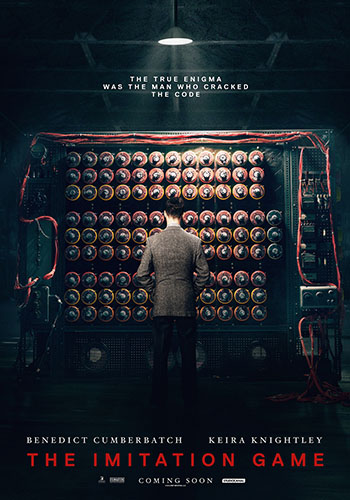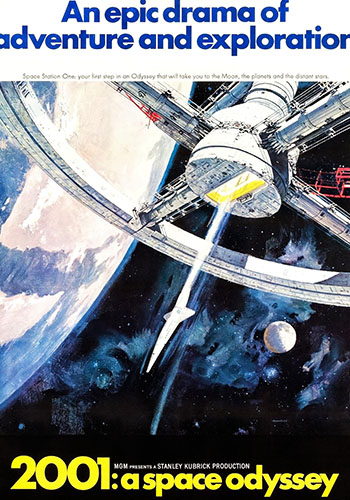
Have you had the chance to experience “Oppenheimer“? If you’re here, it’s quite probable. Much like you, I had the opportunity to witness this cinematic masterpiece, and I must say, I was thoroughly impressed. With Christopher Nolan’s exceptional involvement, “Oppenheimer” is a movie that simply cannot be overlooked. The remarkable portrayals of J. Robert Oppenheimer by Cillian Murphy and Lewis Strauss by Robert Downey Jr. add to its brilliance.
Now, I’ll admit, I also ventured into the world of “Barbie,” and my secret is out. I mention this just to underscore my diverse cinematic interests.
Every moment in “Oppenheimer” oozes an impending cataclysm, perfectly aligning with a film that methodically constructs the path to the creation of a world-altering machine. It masterfully encapsulates the incredible effort behind the atomic bomb’s construction and the profound societal transformations it unleashed.
Trending
As fellow admirers of “Oppenheimer,” I’d like to recommend a few other films you might find equally captivating if you’re in search of similar cinematic experiences.
The Manhattan Project (1986)

“Manhattan Project” isn’t your typical science fiction thriller; it’s like the quirky scientist of the film world. Directed by the inventive Marshall Brickman and co-written with the hilariously clever Thomas Baum, this film features a cast that includes the ever-entertaining Christopher Collet, the wacky John Lithgow, the comically talented John Mahoney, and the delightful duo of Jill Eikenberry and Cynthia Nixon. Despite its box-office results being a bit of a dud, recovering only 21 percent of its budget, it burst onto the scene as the debut project of Gladden Entertainment.
The tale revolves around Dr. John Mathewson, who, in a classic comedy twist, sets up a plutonium refining lab in Ithaca, New York, masquerading as a medical company. He befriends the charming real estate agent Elizabeth Stephens and her son Paul, a young genius in the making. Paul, with his quirky girlfriend Jenny by his side, embarks on a wild adventure to steal plutonium as evidence. But Paul’s big idea for the New York Science Fair, involving a nuclear device, exposes the lab’s true absurdity, triggering a military investigation.
“Manhattan Project” serves up belly laughs with excellent performances by the comedic geniuses Cynthia Nixon and John Lithgow. It’s not just a timeless thriller; it’s a laugh-out-loud commentary on 1980s nuclear concerns. This underrated gem is a comedic delight for audiences of all tastes.
The Imitation Game (2014)

“The Imitation Game” is a cinematic masterpiece that skillfully weaves history, intrigue, and the enigmatic life of mathematician Alan Turing. Directed with finesse by Morten Tyldum and penned by Graham Moore, this film draws inspiration from Andrew Hodges’ 1983 biography, “Alan Turing: The Enigma.”
Set against the tumultuous backdrop of 1939, the movie delves deep into the professional and personal world of Alan Turing. It’s during this era of uncertainty that the newly minted British intelligence agency, MI6, enlists Turing, an exceptional Cambridge mathematics alumnus, for the daunting mission of cracking Nazi codes, with the notorious Enigma cipher posing the ultimate challenge.
As Turing, alongside a dedicated team featuring the remarkable Joan Clarke, takes on the intricate task of deciphering Enigma messages, the film brilliantly portrays their tireless efforts to construct a machine capable of unraveling these secrets. Their journey is fraught with obstacles and adversities, culminating in their eventual triumph as unsung heroes who altered the course of history.
Nevertheless, in 1952, the storyline takes a poignant turn, shedding light on the personal challenges faced by the brilliant mind behind this extraordinary feat, thereby adding a layer of depth and intricacy to Alan Turing’s remarkable tale. “The Imitation Game” is a cinematic gem that captivates, educates, and tugs at the heartstrings, making it essential viewing for all enthusiasts of historical dramas, much like “Oppenheimer.”
2001: A Space Odyssey (1968)

“2001: A Space Odyssey,” crafted by the visionary Stanley Kubrick, serves as a lasting testament to the synergy of creative minds and humanity’s unrelenting pursuit of knowledge. Kubrick, both the director and producer, orchestrated this masterpiece through a collaborative alliance with the esteemed science fiction author, Arthur C. Clarke. Drawing from a wellspring of inspiration, including Clarke’s 1951 short story, “The Sentinel,” as well as an array of literary influences, the screenplay evolved into a cinematic gem. Worth noting is Clarke’s simultaneous project—a novelization of the film—unveiled subsequent to the movie’s premiere.
What sets “2001” apart is its meticulous portrayal of space travel, pioneering special effects, and enigmatic visual storytelling. Kubrick’s departure from conventional cinematic and narrative techniques is striking. Sparse dialogue and extended sequences set to music underscore the deliberate craftsmanship behind every frame. The soundtrack itself is a treasure trove of classical compositions, featuring the works of iconic composers like Richard Strauss, Johann Strauss II, Aram Khachaturian, and György Ligeti.
But “2001” is more than a science fiction epic—it’s an odyssey through evolution. It reaches back to the distant past, where an enigmatic, possibly extraterrestrial force catalyzed human progress by placing monoliths on Earth and beyond. These mysterious monoliths became guiding beacons, propelling humanity to its zenith, symbolized by a moon landing where yet another monolith is unearthed. This discovery serves as a signal to the enigmatic creators of these monoliths, marking humanity’s advanced state of evolution.
Armed with advanced artificial intelligence, humanity embarks on a bold expedition to engage with these enigmatic creators. The excitement and hope that accompany this mission carry the potential to reveal the mysterious next phase of human evolution, a puzzle awaiting revelation.
The image that it conjures has long been a cherished dream for science-fiction enthusiasts worldwide. It’s a symbol not only of Kubrick’s unparalleled attention to detail but also of the film’s pervasive authority. This masterpiece stands as a testament to the 1960s, a charming relic that exudes an undeniable allure and grandeur, firmly securing its place as one of the most visually striking and magnificent films ever crafted.
The Man Who Knew Infinity (2015)

This cinematic creation, adapted from Robert Kanigel’s 1991 book of the same name, transports us to the early 1910s when Ramanujan’s exceptional intellectual gifts blazed brightly, defying the harsh backdrop of his impoverished residence in Madras, India.
His remarkable mathematical talents and unwavering self-confidence caught the eye of the distinguished British mathematics professor, G.H. Hardy. The invitation to Trinity College at Cambridge becomes the catalyst for Ramanujan’s journey, despite the heart-wrenching separation from his young wife, Janaki.
Ramanujan’s arrival in Britain thrusts him into a challenging environment. Here, his predominantly intuitive mathematical theories and deeply ingrained cultural values collide with the demanding academic standards set by his institution and mentor. Moreover, he grapples with the prejudices of a Britain on the brink of World War I. With a family anxiously awaiting him back home and his health in decline, Ramanujan and Hardy embark on a shared struggle. Their collaborative effort not only solidifies Ramanujan’s standing as one of the most brilliant contemporary scholars but also signifies his journey in overcoming a multitude of obstacles.
While the movie is a skillfully crafted cinematic work, it adheres to a familiar narrative of inspiration that might trigger a sense of déjà vu. Nevertheless, its heartfelt elements contribute to an overall enjoyable cinematic experience.
Radioactive (2019)

In the world of biographical dramas, “Radioactive” takes center stage. Directed by Marjane Satrapi, the film stars Rosamund Pike as the iconic Marie Curie. The screenplay, skillfully crafted by Jack Thorne, draws its inspiration from the gripping 2010 graphic novel “Radioactive: Marie & Pierre Curie: A Tale of Love and Fallout” penned by American artist Lauren Redniss.
This cinematic journey immerses us in the extraordinary life of Marie Curie, brilliantly portrayed by Rosamund Pike. The story unfolds in the backdrop of 1893 Paris as Marie crosses paths with her fellow scientist and love interest, Pierre Curie, played by Sam Riley. Their journey includes marriage, parenthood, and jointly winning the Nobel Prize in 1903 for their groundbreaking discovery of radium. Notably, Marie Curie’s triumph marked a historic milestone as she became the first female scientist to receive the esteemed Nobel Prize.
“Radioactive” stands out with its non-linear storytelling, revealing how actions – whether driven by humans or other forces, scientific or otherwise, can lead to unpredictable and often chaotic consequences.
While the film celebrates the legacy of Marie Curie, it has not escaped criticism. Some reviewers have found it wanting in emotional depth, describing it as hurried and lacking in freshness. Despite the undeniable importance of Marie Curie’s story, “Radioactive” leaves a sense of yearning for a deeper exploration of its subject matter.
In closing, fellow Oppenheimer enthusiasts, I present to you this meticulously chosen lineup of movies that I truly believe will strike a chord with your preferences. I wholeheartedly urge you not to let these cinematic gems slip through your grasp; they are bound to ignite your passion for storytelling. My genuine wish is that you derive as much joy from them as I have.
Follow Us: Facebook | Instagram | Twitter | Youtube | Google News



 Follow Us
Follow Us











